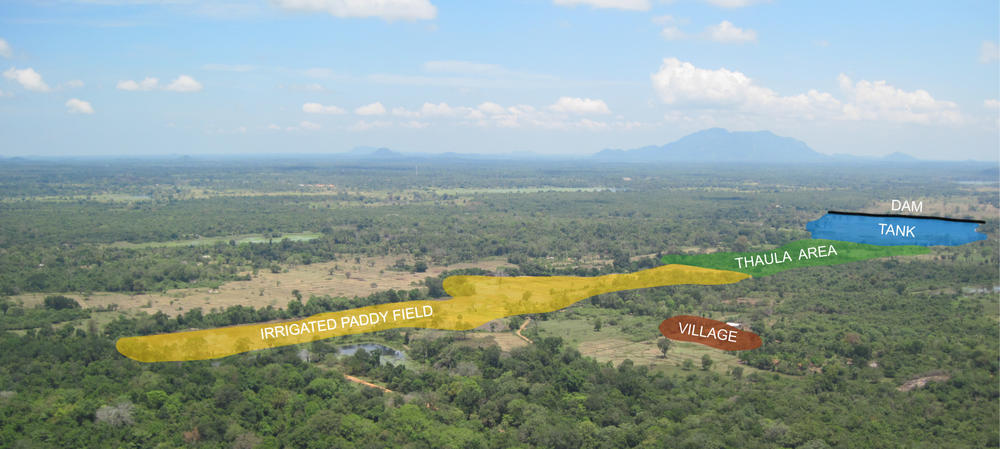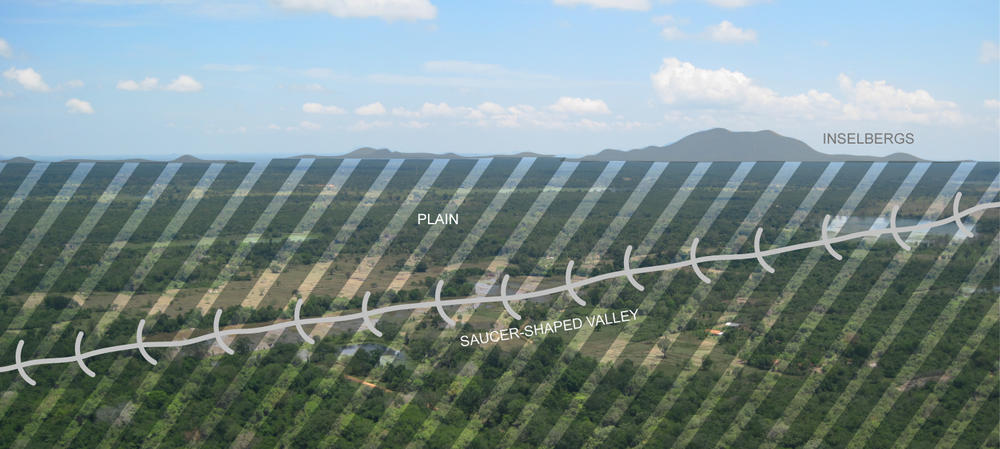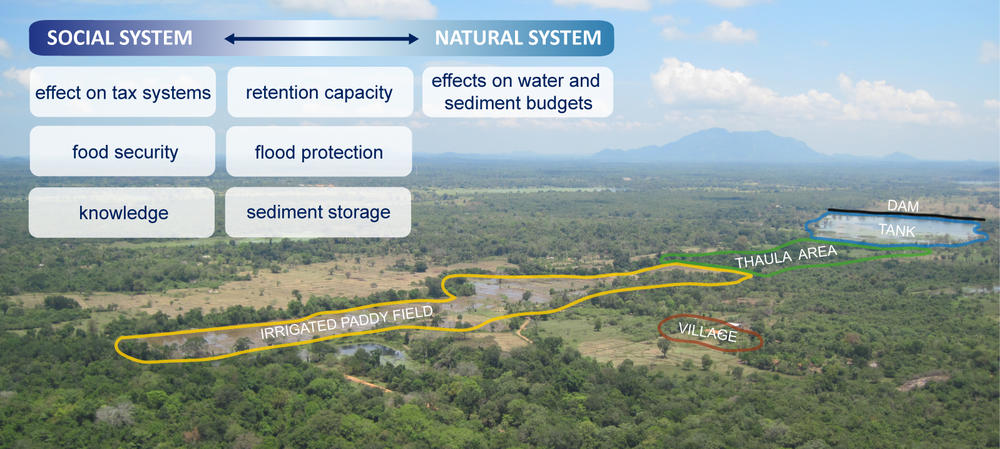An interdisciplinary perspective on landscapes
The tank cascade systems of Sri Lanka are investigated in a joint interdisciplinary research project between the University of Peradeniya and the Freie Universität Berlin.
During joint field visits and discussions, different disciplinary perspectives on the landscape in the study area became evident. Exploring and coupling these perspectives and concepts resulted to an added value for the project, as these discussions the development and adaptation of joint research questions.
A typical section of the cultural landscape in the dryzone of Sri Lanka, with a focus on the water harvesting system.
Bildquelle: W. Bebermeier
The climate in the dryzone of Sri Lanka is characterised by two distinct dry periods throughout the year. To cope with the semi-arid climatic conditions c. 2000 years ago a sophisticated water harvesting system was implemented consisting of human made reservoirs, called tank or wewas, being used to collect, store and distribute rainfall and runoff for paddy irrigation. The so called thaulla upstream of the tank bed serves as sediment trap. In Sri Lanka thousands of tanks were constructed in ancient times, many modern tanks have ancient ancestors, therefore they are understood as part of the cultural heritage of the country.
A typical section of the cultural landscape in the dryzone of Sri Lanka, with a focus on geomorphological landforms.
Bildquelle: W. Bebermeier
Geography as a discipline aims to describe, characterise and analyse the distribution of spatial phenomenon. Geomorphologist are interested in defining landscape units, being characterised by a different geomorphological processes, e. g. plains, inselbergs and the valley, in which the tank system was constructed.
A typical section of the cultural landscape in the dryzone of Sri Lanka – an interdisciplinary perspective
Bildquelle: W. Bebermeier
Coupling of the disciplinary perspectives on the term landscape stimulates new approaches towards research on the tank cascade systems. The construction of tanks from the third century BCE onwards affected the social as well as natural environment of the inhabitants of the dry zone in Sri Lanka. The technology of storing water in the wet seasons for paddy cultivation for instance increases food security and effected the tax systems. For instance…
Construction and maintenance of the tank dam required specific technical skills and knowledge. But ancient societies benefited also from the retention capacity of tanks during high flood events and as a measure to control soil erosion. The natural landscape system reacted on the numerous tanks by changes on the water cycle and sediment fluxes.
Follow this link to learn more about definitions and opinions.
"Tanks in the dry zone of Sri Lanka"
For further readings:


